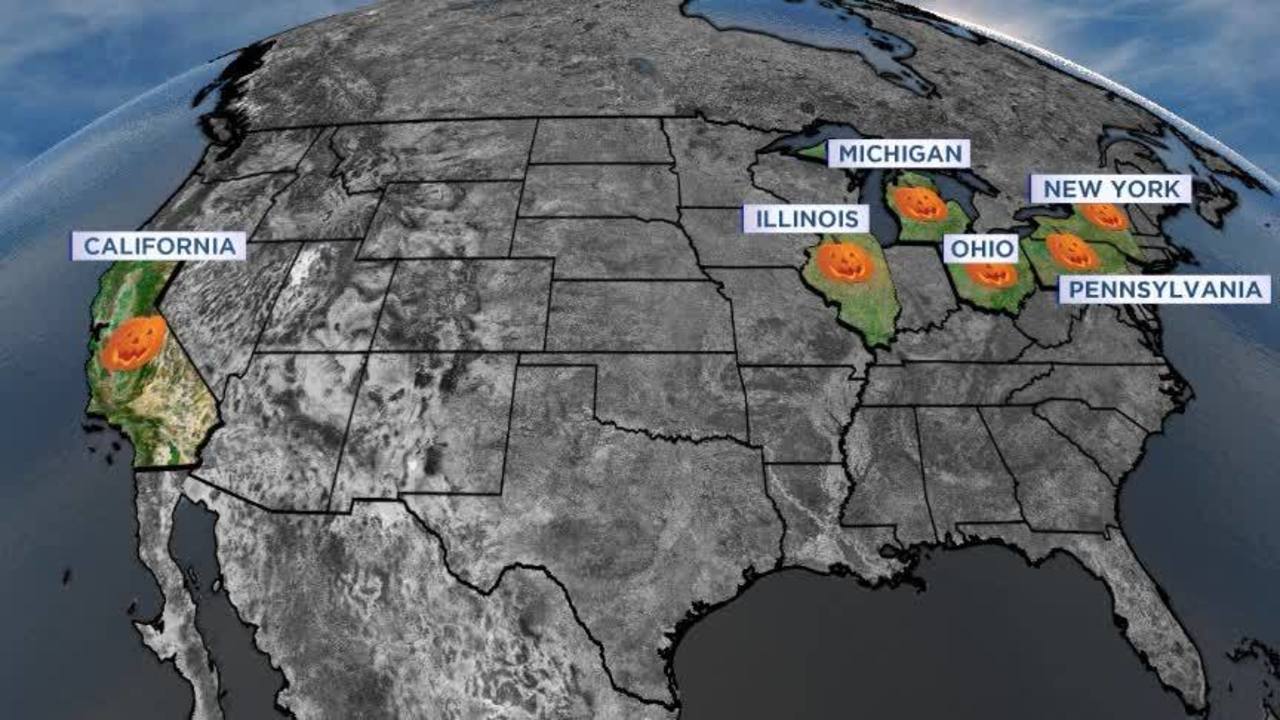Summer is officially be done, and many of us were looking forward to a cooler or at least less humid Halloween, but this year, Central Florida's trick-or-treating is forecast to be hot and very humid.
Kids and teens are more at risk of heat-related illnesses than adults. Their bodies take longer to adjust to hot and humid environments, and they produce more heat with activity than adults do. Children also sweat less than an adult, which sometimes makes adults think the child is not hot.
Considering some kids' costumes can be bulky or made from fabrics that don't breathe easily, as well as all the sugar that kids eat, children could be at risk of having a heat-related illness while trick-or-treating, especially this Halloween. Pay close attention to you kids, ask them to take breaks in air-conditioned places and keep them hydrated with water throughout the day -- don't wait until they are thirsty.
- Heat cramps are painful cramps, typically in legs. If your child's skin is flushed and moist, move the child to a cooler place, remove any excess clothing they're wearing and provide them with hydration, such as water or a sports drink.
- Generally, symptoms of heat exhaustion include muscle cramps; pale, moist skin; fever over 100.4 degrees Fahrenheit; nausea; vomiting; fatigue; headache; and weakness. It is recommended to follow the same first aid and treatment for heat exhaustion as when dealing with heat cramps, but if there is no improvement in the child following treatment, you should take your child to an emergency room immediately.
- Heat stroke is the most dangerous and life-threatening of the heat illnesses, and its symptoms include rapid heartbeat; warm, dry skin; high fever (over 104 degrees Fahrenheit); confusion; seizures; lethargy; and agitation. If you think a child is having a heat stroke, it is crucial to act quickly, move the child to a cool place, call 911, remove any excess clothing the child is wearing and place ice bags under the child's arms and groin area.
Here are 9 facts about heat-related illnesses in children and how to keep them safe this Halloween:
- Teach your children about heat illness and the importance of recognizing symptoms, for them and in others.
- Don't leave children unattended in a vehicle, even if the windows are slightly cracked.
- Keep children hydrated throughout the day. Your child might already be dehydrated when they say they are thirsty.
- Make sure costumes can be easily removed, and preferably go with ones with light colors, that fit loosely and use fabrics that are light and breathe easily.
- Consider going trick-or-treating in air-conditioned places, such as malls.
- Eating light, healthy meals that allow the body to stay cooler.
- Take frequent breaks under shade and to hydrate.
- Ultraviolet rays are still high this time of the year, so make sure to protect your child's skin using sunscreen that is at least SPF 15.
- Keep your child's carrying load light; costume props and candy-filled pumpkin baskets can get heavy quick.
Whether you feel it's a trick or a treat, it's likely going to be the hottest Halloween day on record for central Florida! @WFTV pic.twitter.com/yFrO1UyynU
— tom terry (@TTerryWFTV) October 30, 2019

ORLANDO, Fla. — Follow our Severe Weather team on Twitter for live updates:
- Chief meteorologist Tom Terry
- Brian Shields
- Irene Sans
- Kassandra Crimi
- George Waldenberger
- Rusty McCranie
Cox Media Group
:quality(70)/arc-anglerfish-arc2-prod-cmg.s3.amazonaws.com/public/LBE7EE72IHSXFNMK3DIG7HG6E4.jpg)
:quality(70)/mediaweb.wftv.com/photo/2018/11/08/APP%20DOWNLOAD%20WEX_1541693886850.jpg_13622063_ver1.0.jpg)
:quality(70)/cloudfront-us-east-1.images.arcpublishing.com/cmg/3SUUUF6GS5A6PJGOC73LQAR2RE.jpeg)
:quality(70)/cloudfront-us-east-1.images.arcpublishing.com/cmg/UA57OGRK5TGEW2GYW4XEGHIF5E.jpg)
:quality(70)/cloudfront-us-east-1.images.arcpublishing.com/cmg/P5YXRPVRDVGPLGMO53SUVUR7TA.png)
:quality(70)/cloudfront-us-east-1.images.arcpublishing.com/cmg/XYX2XFRJ5RCVRAAQDBJU65M6K4.jpg)
:quality(70)/cloudfront-us-east-1.images.arcpublishing.com/cmg/O6T2LMP2JJAUFGP2CE3CDOOMJA.jpeg)